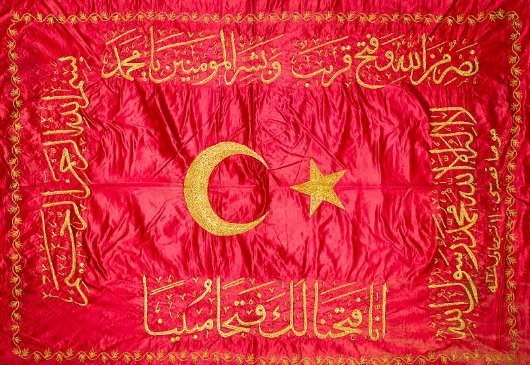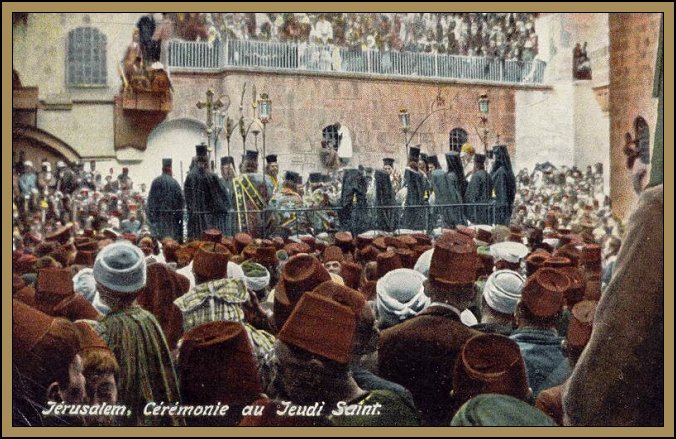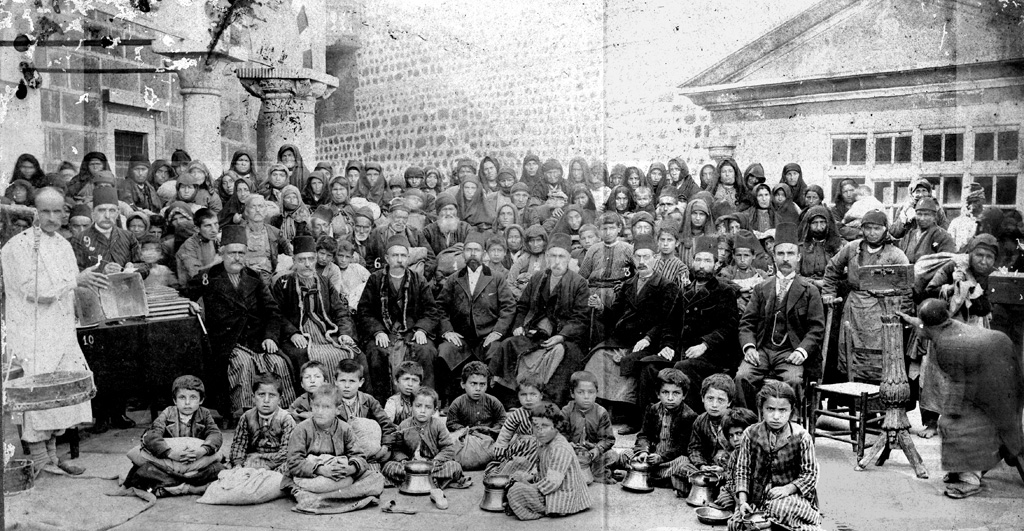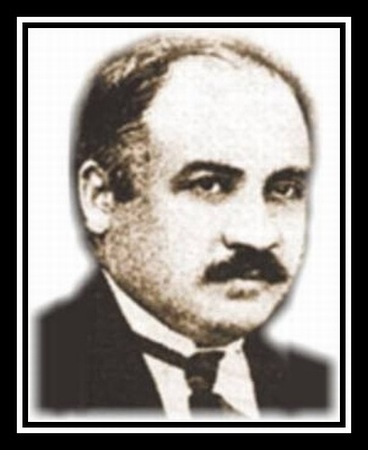
WHAT DID THE OTTOMANS MEAN BY “NATION”?
In earlier times, children were taught the answers to the questions “Who is your Lord? What is your Holy Book?” A child would learn that he was a descendant of the Prophet Adam, a member of the community of the Prophet Muhammad, and a follower of the nation of the Prophet Abraham.
During the Ottoman era, Turks described themselves as Muslims. But the only factor in a national identity is not how a group defines itself; it is also how its neighbors define it. Everyone outside the group referred to the Turks as “Turks.” Greeks, Bosnians, Albanians, Serbs, Bulgarians, Armenians, Arabs, and Kurds all called the Turks “Turks.” The name of the language they spoke was Turkish. From one end of the Ottoman Empire to the other, what was meant by the term “Turk” was clear: Muslims who spoke Turkish were called Turks. In fact, in places like Bosnia and Macedonia, even Muslims who didn’t speak Turkish were still referred to as Turks. “Ottoman,” on the other hand, is the name of a family and a state; for a man on the street to call himself an “Ottoman” would be the height of absurdity. No such thing ever occurred. Turks did not call themselves Turks. How could they? They were the ruling elite of an empire that housed many nations, and their Muslim identity had for centuries been paramount.
After the 1850s, some members of the Ottoman ruling class who had been to Europe began to pursue the dream of creating an “Ottoman nation.” They said: “Nationalism is popular in the modern world; let us also form an Ottoman nation, standardize our language and call it Ottoman, and even designate a common outfit (such as the fez).” But this took hold nowhere except perhaps in a few large cities.
The same goes for the Azerbaijanis. The Ottomans called them Adjem (Persians). They were the Persian-speakers who spoke Turkish. In plays and Karagöz shadow puppetry, there is a humorous character who speaks Turkish in a Persian accent. They too primarily saw themselves as Shiites. The Azerbaijani presentation of themselves as Turks began only after 1905, both in Russia and in Iran. The use of the term “Turk” by Turks themselves in the Ottoman State also dates from after 1908. Educated people exiled from Russia following the 1905 revolution brought this idea to Ottoman lands. In 1910, Türk Ocakları (Turkish Associations) were established.
.jpg)
The Nation of the Ottomans!
The word millet is Arabic and refers to those who belong to the same religion. In the Qur’an, people are commanded to follow the nation of the Prophet Abraham. Why the nation of Abraham? Because in his time, there was no one else who upheld the belief in the oneness of God. While nearly everyone around him worshipped idols, he alone worshipped the One God. The Qur’an says that Allah made him an imam (leader) for all people and believers. The belief in the oneness of God was passed down to future generations through this prophet. All heavenly religions (Judaism, Christianity, Islam) consider him great and believe in him. The doctrinal and moral principles found in all religions have their origin in him.

That is why, in Islamic belief, Muslims are described as the community (ummah) of Muhammad and the nation (millet) of Abraham. In old catechism books, it is written: “Religion and nation are one and the same.” For instance, in the book Miftah al-Jannah by Muhammad of İznik, a scholar from the time of Sultan Mehmed II, this is stated.
In al-Milal wa al-Nihal (“Nations and Sects”), written by 12th-century Islamic scholar al-Shahrastani and considered one of the earliest and most comprehensive works on world religions and sects, the term millet is also used for members of a religion.
In the Ottoman Empire, non-Muslim subjects were grouped according to their religions and each group was granted religious/legal privileges. There was the Islamic nation, the Greek Orthodox nation, the Armenian nation, the Jewish nation, etc. This was called the “millet system.” Each non-Muslim nation had a religious leader who officially represented that nation before the state.
The situation is no different in Europe. Indeed, British historian Sir Lewis Namier says, “Religion is a sixteenth-century word for nationalism.” (Immanuel Vallerstein, The Modern World-System I, University of California 2011, p. 332)

Slogan Nationalism
Sheikh al-Islam Mustafa Sabri Efendi says: “Nationality is the unity of those born and raised in the same land, sharing religion, customs, traditions, and common interests. It is acquired at birth. The religion of Islam is an inseparable part of this nationalism. To benefit fully from nationalism, it commands hard work, love, granting the same rights to other nations, and equal access to justice and social rights. Nationalism is when people who belong to the same religion, speak the same language, live on the same land, and share a common history and ideal feel close to each other; when they desire the happiness, prosperity, and advancement of their nation and strive toward that goal. It does not involve prioritizing race or measuring skulls. There is also ‘slogan nationalism,’ used by authoritarian regimes to keep the people under control. In fact, in Communist countries, those who fought heroically on the front lines during World War II were executed upon returning so they wouldn’t take over the government. The Qur’an says that all people come from the same man and woman, and that superiority lies only in fearing God. If Muslims are divided, the danger of conflict among them arises. This cannot be reconciled with nationalism.”
The word millet as used today corresponds in Arabic to qawm, shaʿb, and qabīla. The Qur’an says that people were divided into shaʿb (nations) and qabīla (tribes) so that they may recognize one another. Belonging to a tribe, knowing one’s ancestry, and loving one’s tribe are not condemned. What is condemned is imagining superiority based on lineage and looking down on others with absurd presumptions.
The concept of nation (millet) differs from the concept of people (halk) in that it also includes the past. The modern Turkish nation is to a large extent a product of the six-century-long Ottoman past. Under Ottoman rule, the Turkish nation preserved its existence and was able to develop by diversifying its structure. The importance of the Ottoman dynasty in terms of Turkish national identity is clear.
.jpg)
From Then to Now…
The understanding of nationalism as we know it today began with the Committee of Union and Progress (CUP, also known as the Young Turks). These committee members, most of whom lacked a true understanding of nationalism and many of whom were not even of Turkish origin, clung to an ideal—Turkism—as the empire they had driven from war to war teetered on the brink of collapse. They believed they would achieve victory with this idea, promoted by their ideologue Ziya Gökalp. They became obsessed with the dream of liberating the captive Turks.
In this direction, they first began transforming the empire into a nation-state. They embarked on the process that Europeans referred to as “Turkification.” After deporting 120,000 Greeks from the Aegean coast and driving nearly a million Armenians into the Syrian deserts, they turned their attention to the Muslim subjects. The phrase “How happy is the one who says ‘I am a Turk’!” dates back to 1911. Europeans watched this collective suicide in astonishment.

The Albanians were the first to rebel due to mistreatment they had never experienced before. Albania and Kosovo were lost. Then the Arabs revolted, accusing the Unionists of sending their own children to study in European schools while banning Arabic and forcing Arab children to attend Turkish schools. Vast Islamic lands were lost.
The Greeks invaded Anatolia under the pretext of protecting the Greek population. Just when it was the Kurds’ turn, the empire collapsed. As a result, the captive Turks fell into even greater captivity. Most of the Unionists infiltrated the Ankara movement and tried to continue their aims from where they left off. They sowed the seeds of hostilities that have continued to plague everyone to this day.
Önceki Yazılar
-
WHO CAN FORGIVE THE KILLER?31.12.2025
-
WHEN WAS PROPHET ISA (JESUS) BORN?24.12.2025
-
IF SULTAN MEHMED II HE HAD CONQUERED ROME…17.12.2025
-
VIENNA NEVER FORGOT THE TURKS10.12.2025
-
THE FIRST UNIVERSITY IN THE WORLD WAS FOUNDED BY MUSLIMS3.12.2025
-
WHO BETRAYED PROPHET ISA (JESUS)?26.11.2025
-
IT HAS BEEN MORE THAN 100 YEARS SINCE ITS ABOLITION, BUT... IS THE CALIPHATE BEING REESTABLISHED?19.11.2025
-
GREETINGS TO YOU, O OTTOMAN SANJAK!…12.11.2025
-
ROTHSCHILDS BROUGHT THE END OF THE OTTOMAN EMPIRE!5.11.2025
-
SHEIKH BEDREDDIN, SON OF THE QADI OF SIMAVNA29.10.2025